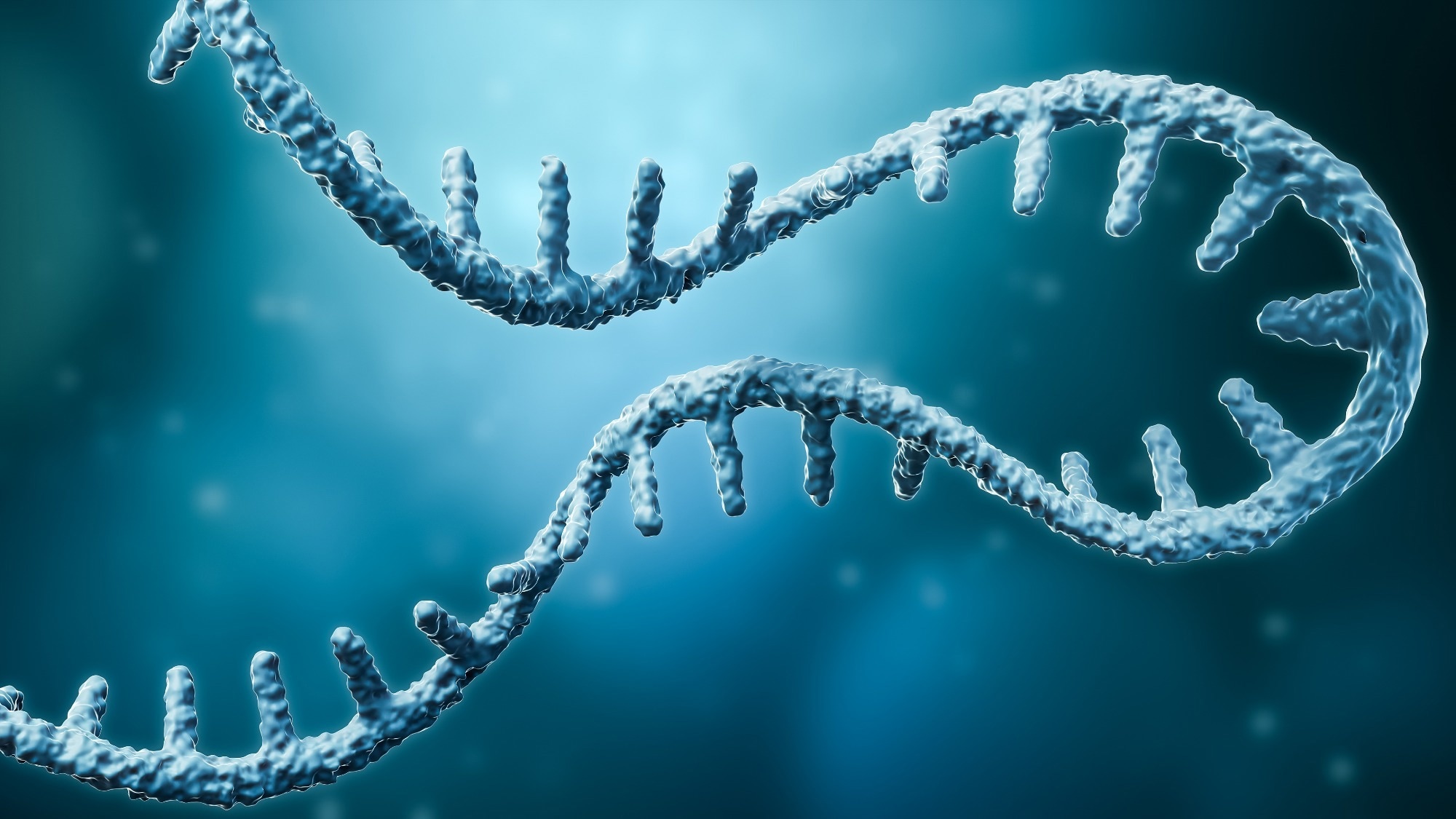In a recent review published in Nature Medicine, researchers presented challenges related to the clinical translation of messenger ribonucleic acid (mRNA) technology, recent innovations, and future directions to improve the clinical efficacy of mRNA nanomedicine.
 Study: The landscape of mRNA nanomedicine. Image Credit: MattLphotography/Shutterstock
Study: The landscape of mRNA nanomedicine. Image Credit: MattLphotography/Shutterstock
The therapeutic efficacy of nucleoside-modified Pfizer–BioNTech and Moderna mRNA coronavirus disease 2019 (COVID-19) vaccines has encouraged the development of mRNA nanomedicine to widen the therapeutic landscape of several diseases such as COVID-19 and cancers. Scientific progress in mRNA designs and delivery has largely addressed challenges related to mRNA use in clinical settings.
About the review
In the present review, researchers presented key advances in mRNA nanomedicine and related challenges that need to be addressed to unleash the true therapeutic potential of mRNA technology.
Key advancements in mRNA technology
Messenger RNA transfers genetic information from deoxyribonucleic acid (DNA) to ribosomes, where the information is further translated into proteins. The delivery of mRNA expressing antigens of cancers or infectious diseases, gene-editing components, or disease-associated therapeutic proteins enables clinical applications such as vaccines, gene-editing, and protein therapy can be achieved. The mRNA was first discovered in 1961 and delivered in vivo by polymeric particles in 1976; after two years, mRNA delivery to mice and human cells by liposomes was performed.
In 1995, an mRNA-based vaccine for cancer was first evaluated in mice. After ten years had passed, studies reported that modifications in nucleosides decreased toll-like receptor (TLR) signaling in response to mRNA activity. Between 2008 and 2012, studies reported that modifications in nucleosides could inhibit the activation of 2′-5′-oligoadenylate synthetase and protein kinase R38 (PKR38), prevent ribonuclease (RNase) L51-induced cleavage, and enhance mRNA stability and translation.
In 2017, clinical trials for mRNA-based anti-cancer vaccines were conducted. Three years later, severe acute respiratory syndrome coronavirus 2 (SARS-CoV-2) BNT162b2 and mRNA-1273 vaccines were approved for emergency use from the US (United States) government. In 2021, studies reported that lipid nanoparticles (LNPs) could be used as adjuvants in SARS-CoV-2 mRNA vaccines.
Challenges for clinical translation of mRNA technology
The main hurdles for mRNA clinical translation are the stability, translation efficiency, and immunostimulatory potential of exogenous mRNA. Current mRNA synthesis methods fail to remove impurities such as double-stranded RNA and RNA fragments, which reduce the therapeutic efficacy and cause undesired biological responses in clinical use. Further, mRNA is a large, negatively charged, single-stranded polynucleotide that is difficult to pass through negatively charged cell membranes.
After local or systemic delivery, mRNAs face challenges such as rapid degradation by nucleases, macrophage phagocytosis removal, and renal filtration clearance. Most internalized mRNAs are trapped in endosomes and can be detected by endosomal RNA sensors (TLR3, TLR7 and TLR8) and cytosolic RNA sensors (such as retinoic acid-inducible gene-I (RIG-I) and melanoma differentiation-associated protein 5 (MDA5) that reduce mRNA translation and stability. Cytosolic mRNA binding and translation efficacy can be improved using an optimized 5′ cap design.
Further, untranslated region (UTR) optimization, a computational platform, and 100–150 nucleotide-long poly(A) tail use can improve mRNA translation and stability. Novel UTR sequence identification by deep learning or high-throughput screening can improve mRNA expression, and rational 5′ and 3′ combinations can maximize mRNA translation efficiency. Nucleoside modification, mRNA purification, chemo-enzymatic modification, and the 5′ cap design can modulate immunostimulation by IVT mRNAs.
Designing of mRNA therapeutics and related innovations
Therapeutic messenger ribonucleic acid is usually synthesized in vitro using linear DNA as a template and RNA polymerase enzyme and subsequently purified. The mRNA molecule consists of a 5′ UTR, protein-encoding open reading frame (ORF), 5′ cap, poly(A) tail, and 3′ UTR. UTR sequences from human β-globin are utilized for synthesizing mRNA.
Using modified nucleosides—such as pseudouridine (ψ), 5-methylcytidine, N6 -methyladenosine, 5-methyluridine and 2-thiouridine can reduce cytokine production by preventing recognition by TLRs, and decreasing PKR38 and 2′-5′-oligoadenylate synthetase activity. Replacing partial nucleosides with 2-thiouridine and 5-methylcytidine reduces RIG-1 activation. The mRNA is expressed in target cells for clinical translation and purified by high-performance liquid chromatography to remove double-stranded RNA contaminants and increase protein expression in cells without immunostimulation.
Currently, mRNAs are manufactured with a cap-1 structure by co-transcriptional capping, with satisfying translation efficiency. Vehicles for mRNA delivery protect mRNAs from degradation, cross various biological barriers and efficiently deliver mRNAs into the cytoplasm for protein expression. Currently used vehicles include LNPs, lipid-polymer hybrid nanoparticles, and polymeric nanoparticles.
Recent innovations in mRNA delivery include the retrovirus-like protein polyethylene glycol 10 (PEG10)-virus-like particle (VLP) platform and a fusogenix proteo-lipid vehicle platform. The mRNA engineering innovations include circular RNA and self-amplifying RNA. Self-circularization of RNA improves mRNA stability and provides long-term protein translation. The PEG10- VLP (virus-like particle) platform comprises PEG10 protein for mRNA packaging and fusogen syncytin A (SYNA) for cell targeting for direct intracytoplasmic mRNA delivery.
Overall, the review findings highlighted the enormous potential of mRNA technology in the field of nanomedicine. Encouraged by the success of mRNA COVID-19 vaccines, more mRNA-based therapies are expected to be used clinically. However, further research should be conducted to improve understanding of the biological pathways affecting mRNA delivery and translation in vivo, taking the immunostimulation and potential toxicity of mRNA-based agents into account.